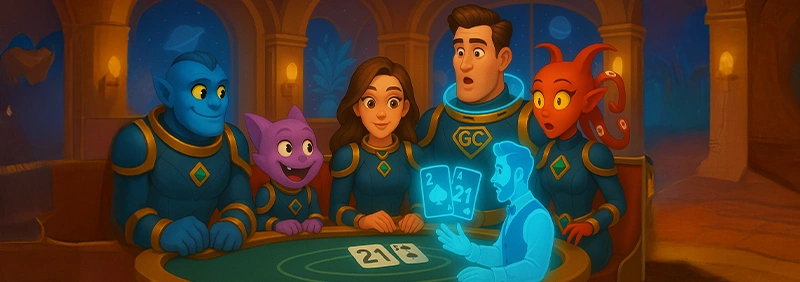Home > Casino Lab > Casino innovation > Holograms and 3D Live Dealers: Reinventing the Casino Experience
Holograms and 3D Live Dealers: Reinventing the Casino Experience
The gambling industry has always been at the cutting edge of marketing, using spectacle and innovation to capture attention. Today, one of the most powerful tools reshaping the way casinos promote themselves is FOOH marketing (Fake Out Of Home).
By blending 3D animation, augmented reality, and cinematic effects, FOOH campaigns transform landmarks, cityscapes, and screens into dynamic storytelling canvases. For online casinos, this new wave of creative advertising delivers shareable, viral experiences that connect digital brands with the physical world.

From Video Streams to Immersive Dealers
For years, online casinos have relied on live dealer games—real croupiers streamed from studios to player screens. While effective, this format is limited to flat video interactions. Holograms and 3D modeling take things further by projecting dealers into players’ environments or rendering them as interactive avatars within virtual spaces.
Imagine donning AR glasses and seeing a blackjack dealer appear in your living room, or entering a VR casino where a fully animated, lifelike 3D croupier greets you by name. These experiences restore the social and atmospheric elements that traditional online platforms often lack.
The Power of Holographic Technology
Holograms are no longer science fiction—they are being deployed in events, retail, and now casinos. By using holographic projection systems or AR overlays, casinos can create the illusion of live dealers standing directly in front of players.
For land-based casinos expanding into hybrid models, holograms allow operators to host virtual tables accessible worldwide, projecting branded dealers who interact with both physical and online audiences. This creates a seamless bridge between on-site glamour and global digital access.
3D Live Dealers and Player Interaction
3D live dealers powered by motion capture, AI, and real-time rendering represent the next generation of interaction. These avatars are not just visual representations—they can react dynamically to player choices, use natural language processing to converse, and even adjust body language for immersion.
This technology transforms passive viewing into active participation. Players don’t just watch a dealer—they engage with them, creating experiences closer to being in a real casino while enjoying the convenience of online access.
Benefits for Operators and Players
- For players: Holograms and 3D dealers create more engaging, social, and realistic experiences, bridging the gap between land-based and online play.
- For operators: These innovations provide differentiation in a crowded market, boosting retention and attracting younger, tech-savvy audiences.
- For the industry: They set the stage for hybrid casinos that merge physical venues, digital platforms, and immersive technologies into a single ecosystem.
The Future of Casino Immersion
By 2030, holographic and 3D dealers could become mainstream in iGaming. As VR and AR headsets become more affordable, and as AI advances, players may expect to see fully interactive casino hosts integrated into their gambling platforms. Beyond tables and slots, holographic concerts, tournaments, and game shows could redefine casinos as multi-entertainment hubs.
Conclusion
Holograms and 3D live dealers are not just technological novelties—they are the future of immersive gambling. By restoring presence, atmosphere, and interactivity to online casinos, they bridge the divide between digital platforms and real-world excitement.
For players, this means richer, more personal experiences. For operators, it’s a chance to lead the way in a rapidly evolving iGaming industry.
